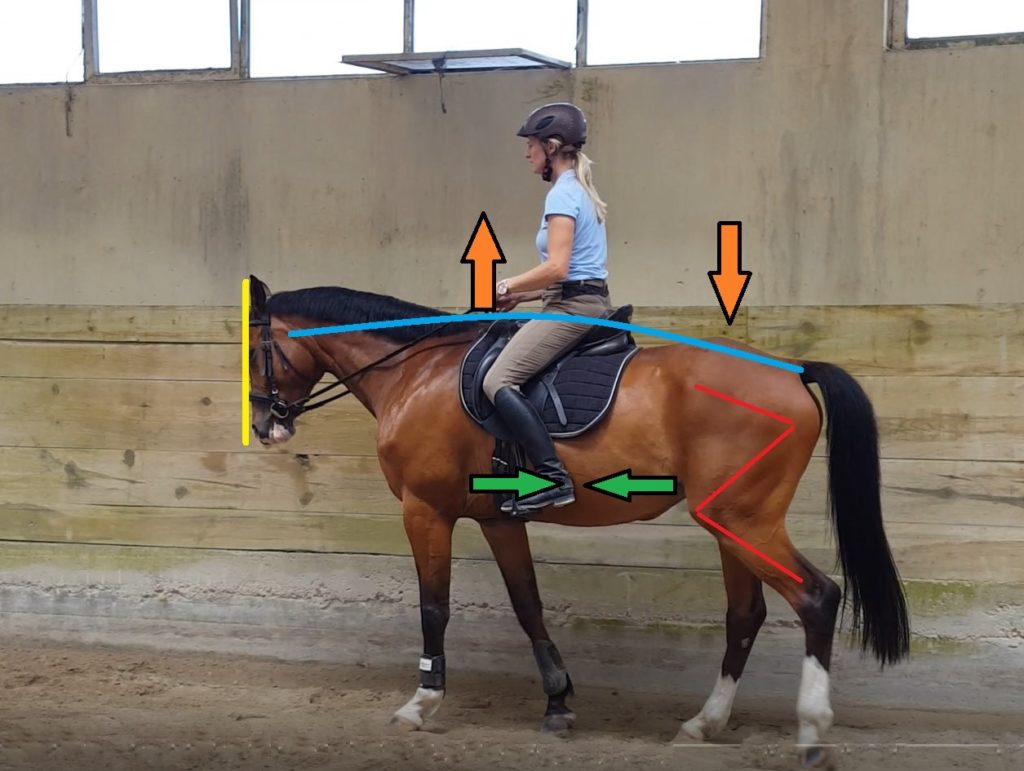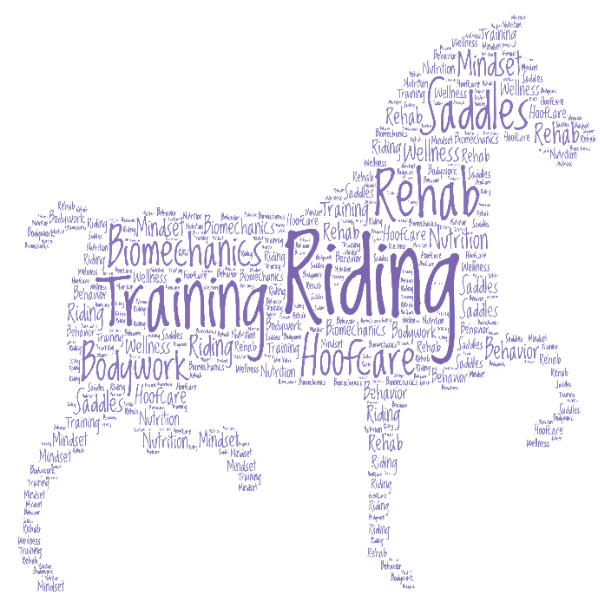Working on Rein-Back with your Horse
BY ALJA KISILAK
THE BENEFITS OF THE REIN-BACK EXERCISE
The exercise rein-back, where the horse is asked to move backwards, can have a very positive effect on the horse’s posture, movement and his athletic performance when done correctly. When not performed correctly, however, it can damage his body and harm the rider-horse relationship.
When performing the exercise correctly, the horse activates his core muscles, evenly bends the joints of the hind legs and tucks in his pelvis. This means he is able to transfer more weight onto his hind end, with the wither lifting up higher. His topline is relaxed, he is moving with control in a straight line, in a two-beat manner. The footfall is similar to that of trot – the diagonal pair of legs moves almost simultaneously up and backwards. The more disassociation there is between the diagonal legs, the poorer the quality of the exercise. The contact should be light but consistent and the rider’s aids should be invisible.
TEACHING REIN-BACK FROM THE GROUND
We should always teach this exercise from the ground first, without the added weight of the rider. We should also teach it without a bit. Ideally, we start off next to a fence, which will help the horse maintain the correct direction of movement. It will be a big help if we are able to invite the horse to stand as square as possible. Using our body language, we ask the horse to step backwards. If this is too subtle, we add pressure on the cavesson or halter, using half halts to maintain the right head and neck position. If even this is too subtle for the horse beginning to learn this exercise, we can touch his chest with the whip very gently. Usually the horse will respond to this by shifting his weight backwards. Even just a shift of the weight is completely enough for the first try.
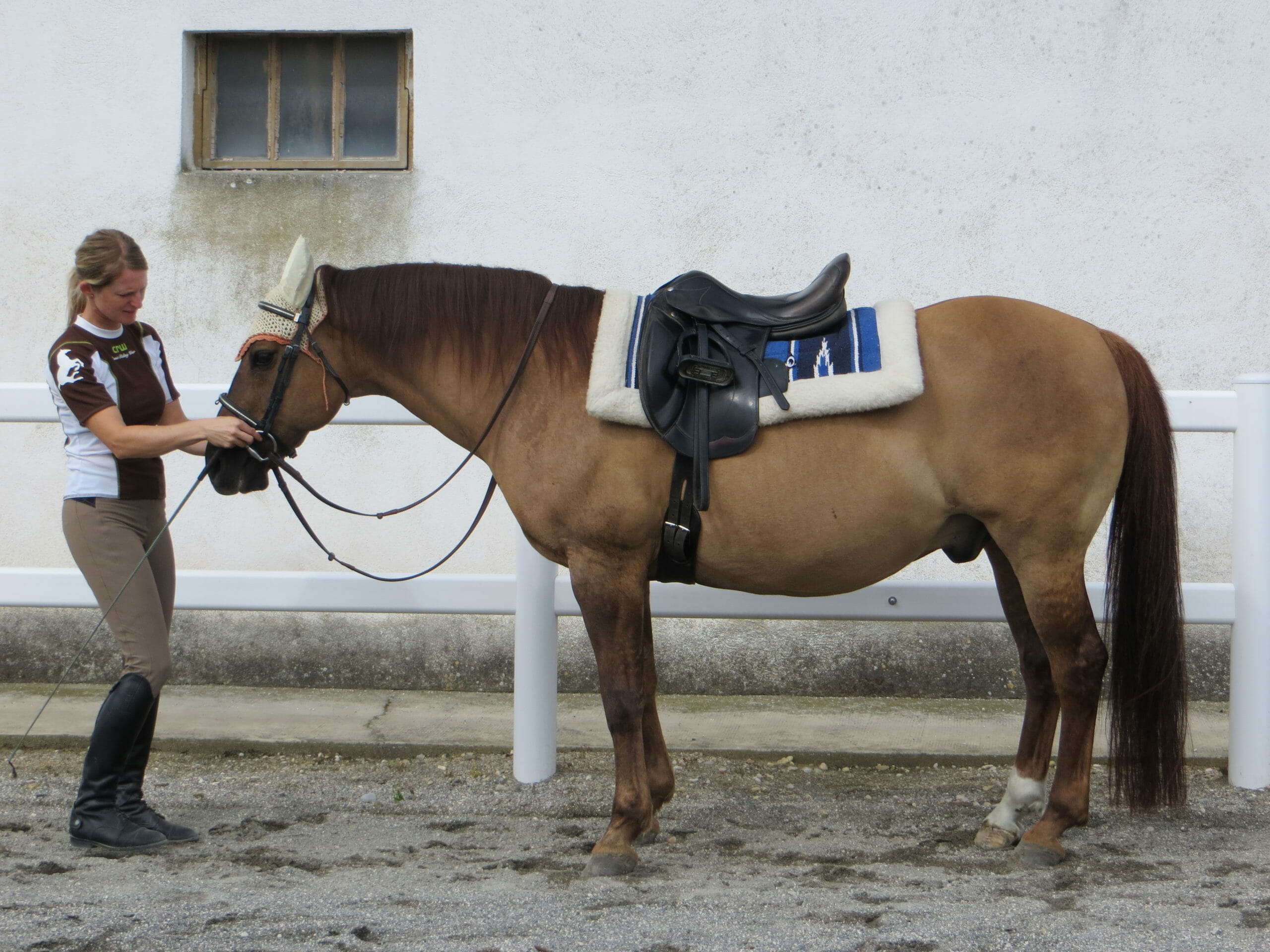 In the next phase (which doesn’t have to be in the same training session), we are looking for the first step or two backwards. After a few tries and a short break to gather his thoughts, the horse usually understands that we want him to move backwards. Reward this. Eventually we can ask for more steps backwards. Don’t worry about speed or rhythm just yet, it’s fine if the horse goes slowly at first. Later on we can ask the horse for faster and more active movement backwards. Our goal is for him to be able to do 4-6 clear, energetic steps backwards in a good rhythm and a straight line. When the horse knows how to perform the rein back in hand, we can add the weight of the rider. At first the rider should sit passively, with a person on the ground asking the horse for the movement. This will help him carry the extra weight in a correct posture. Only when he is able to perform the exercise with good posture with the added weight, the rider can start giving the cues.
In the next phase (which doesn’t have to be in the same training session), we are looking for the first step or two backwards. After a few tries and a short break to gather his thoughts, the horse usually understands that we want him to move backwards. Reward this. Eventually we can ask for more steps backwards. Don’t worry about speed or rhythm just yet, it’s fine if the horse goes slowly at first. Later on we can ask the horse for faster and more active movement backwards. Our goal is for him to be able to do 4-6 clear, energetic steps backwards in a good rhythm and a straight line. When the horse knows how to perform the rein back in hand, we can add the weight of the rider. At first the rider should sit passively, with a person on the ground asking the horse for the movement. This will help him carry the extra weight in a correct posture. Only when he is able to perform the exercise with good posture with the added weight, the rider can start giving the cues.
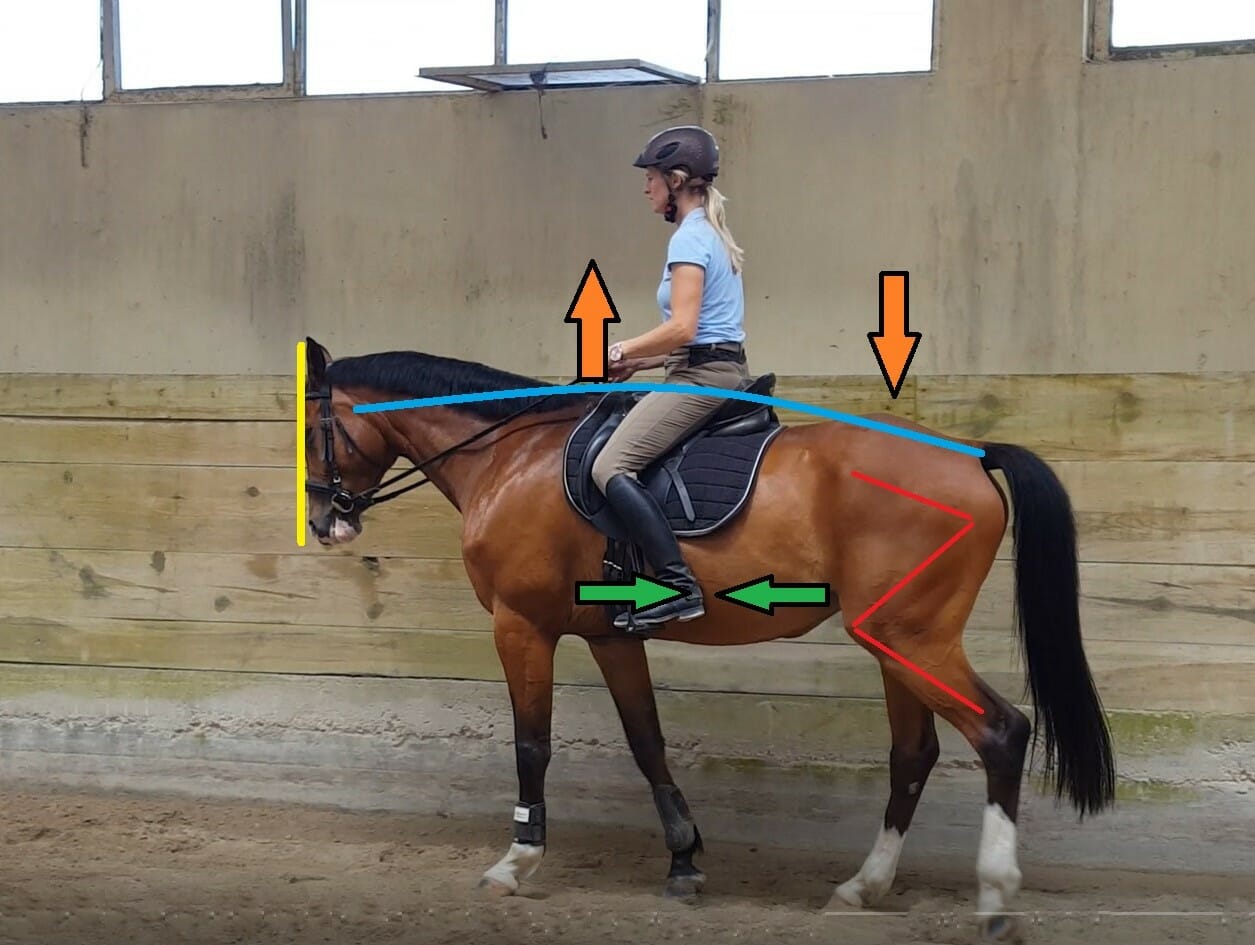 COMMON MISTAKES
COMMON MISTAKES
If the rider tries to perform the exercise incorrectly – if it is too rushed, forced or backed up by negative emotions like anger or fear, the rein back can be harmful for the horse’s back, his SI region and the joints of the hind legs. It can ruin the horse’s trust in the rider and make him less sensitive to the rein aids. One of the most common mistakes done by riders is leaning back with the upper body.
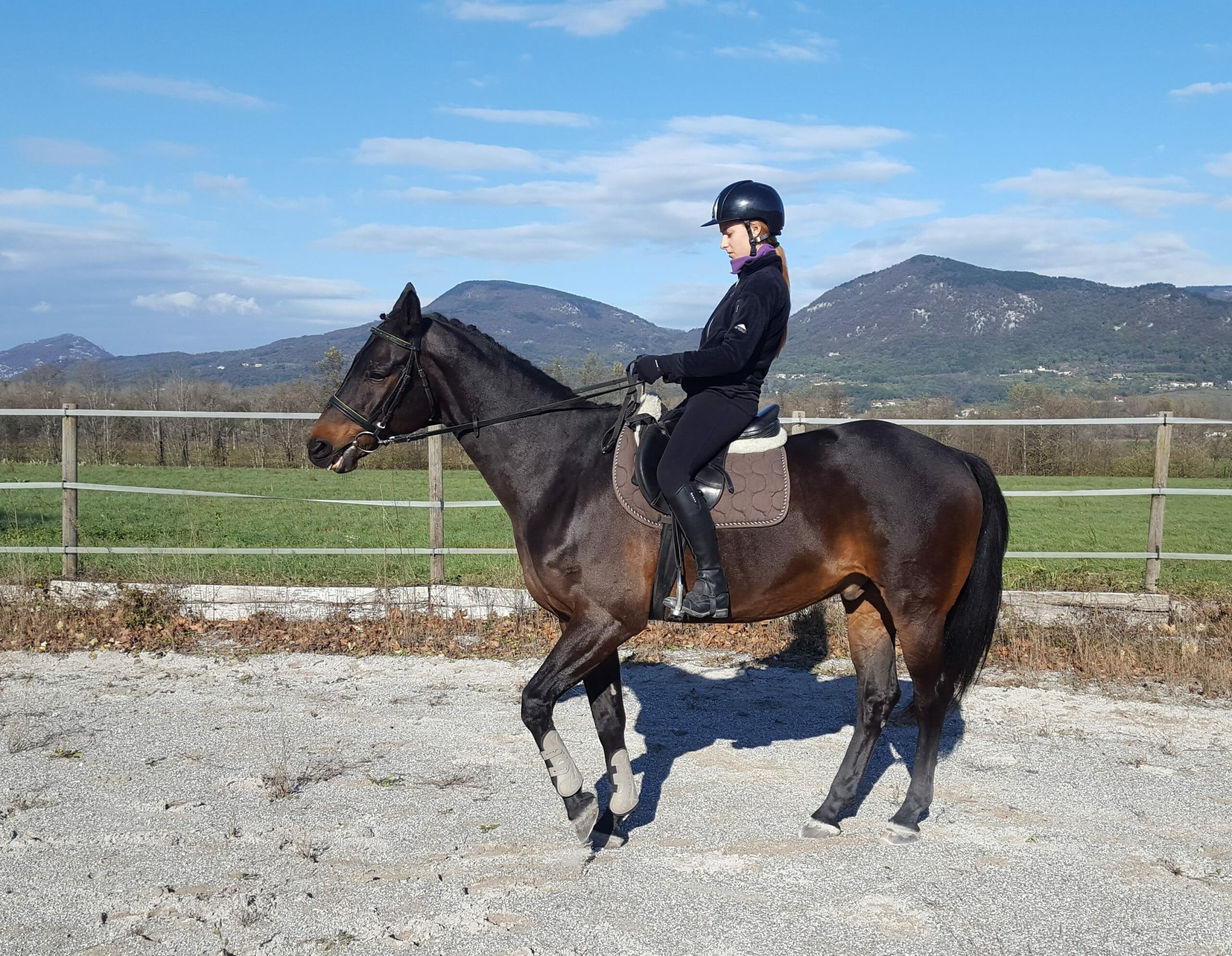 This causes his pelvis to shift, which makes the seat bones apply pressure downwards and forward. This can make the horse think he is being asked to go forward or makes him hollow the back and drop the base of the neck. In this posture he is not able to transfer weight onto the hind legs. The rein back done in this posture will be tense and the purpose of the exercise will be lost. If the rider leans forward with his upper body, he creates too much pressure on the withers and shoulders, adding weight to the front legs. A rein back done in this posture will overburden the front legs. A big mistake is pulling the reins backwards, which causes the horse to resist and lift his head high. This will be especially evident if the rider is also not sitting correctly, disabling him from moving backwards. Often the horse will respond to too much rein pressure by hiding his head behind the vertical, towards his chest. This prevents him from lifting through the base of the neck and between the shoulderblades, which makes it impossible to transfer weight onto the hind end. If we take the time to teach the horse how to perform a correct rein back, it can be a wonderful tool to help the horse develop collection, lightness and responsiveness. It will also come in handy on the trail or in competition styles like working equitation.
This causes his pelvis to shift, which makes the seat bones apply pressure downwards and forward. This can make the horse think he is being asked to go forward or makes him hollow the back and drop the base of the neck. In this posture he is not able to transfer weight onto the hind legs. The rein back done in this posture will be tense and the purpose of the exercise will be lost. If the rider leans forward with his upper body, he creates too much pressure on the withers and shoulders, adding weight to the front legs. A rein back done in this posture will overburden the front legs. A big mistake is pulling the reins backwards, which causes the horse to resist and lift his head high. This will be especially evident if the rider is also not sitting correctly, disabling him from moving backwards. Often the horse will respond to too much rein pressure by hiding his head behind the vertical, towards his chest. This prevents him from lifting through the base of the neck and between the shoulderblades, which makes it impossible to transfer weight onto the hind end. If we take the time to teach the horse how to perform a correct rein back, it can be a wonderful tool to help the horse develop collection, lightness and responsiveness. It will also come in handy on the trail or in competition styles like working equitation.
IF YOU LIKED THIS POST, YOU MAY ALSO BE INTERESTED IN THE FOLLOW ING CONTENT:
BLOG POST: https://www.equitopiacenter.com/training-plan/
ONLINE COURSE: https://www.equitopiacenter.com/shop/how-to-recognize-the-24-behaviors-indicating-pain-in-the-ridden-horse-dr-sue-dyson/
VIDEO: https://www.equitopiacenter.com/videos/balancing-the-rider-coordinating-body-mind-and-movement/
ABOUT ALJA KISILAK
Alja is a riding instructor, passionate about bringing out the best in the horse and the rider and making the experience fun for both of them. In 2008 she graduated from the Biotechnical University of Ljubljana with a thesis on Equine Psychology. Her wide knowledge on the learning theory, coupled with strong intuition and feel enables her to combine the science and art of riding into a coherent whole. She is constantly on the lookout for new knowledge and experiences and this search has led her all over Europe, where she learned from some of the best trainers of classical dressage. In addition to her work with horses, she has a gift for working with people too. She worked as a main trainer, equine assisted psychotherapy facilitator and riding instructor at MKZ Rakitna, Grad Prestranek and Cavallista riding school. Her unique skill set enables her to understand the horse’s and the rider’s perspective and their individual needs, which is the perfect combination for training that is tailored to both horse and rider.

